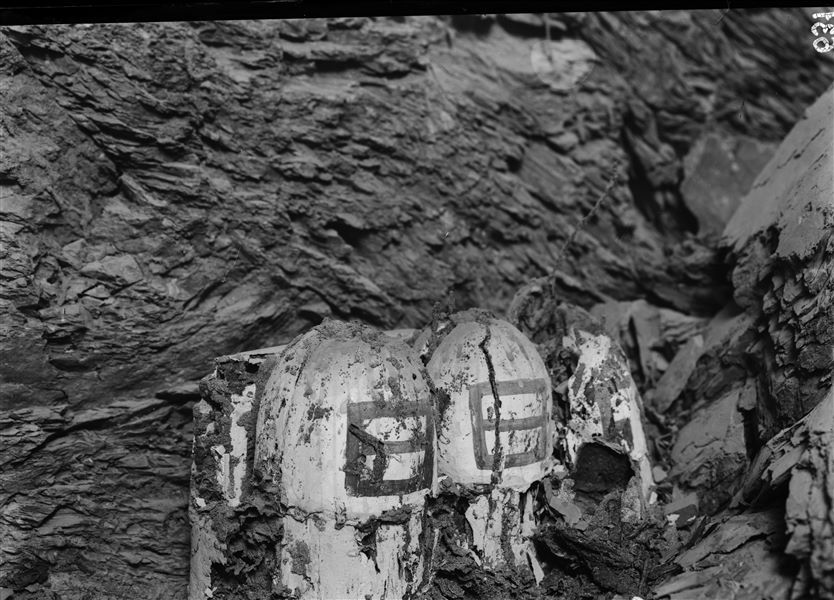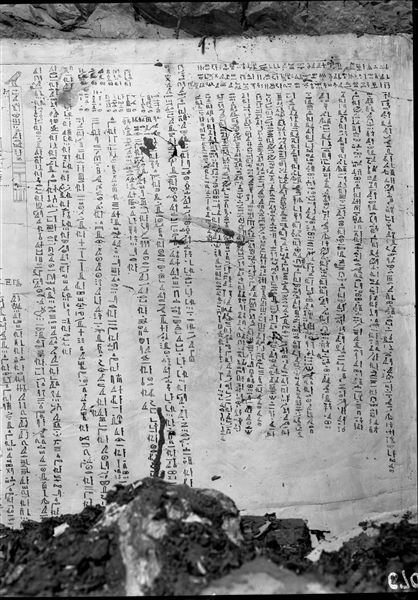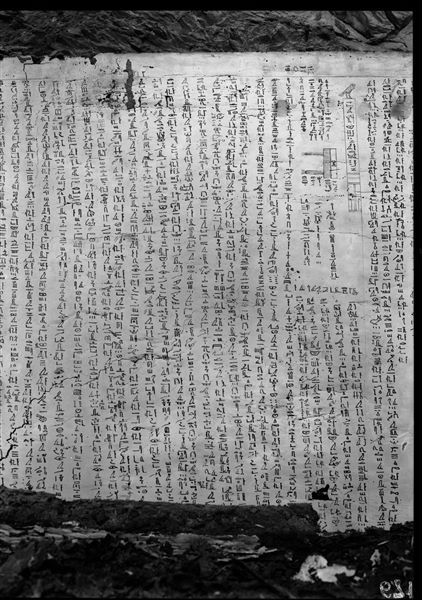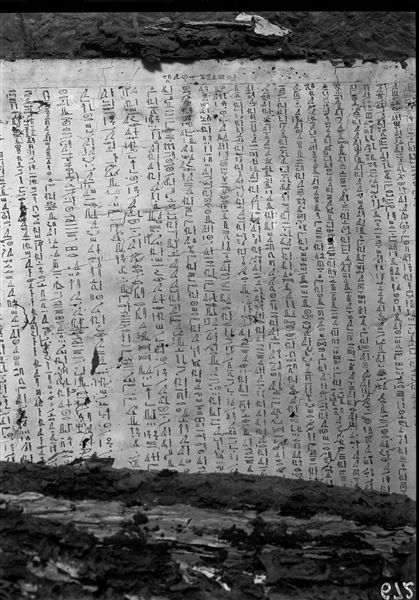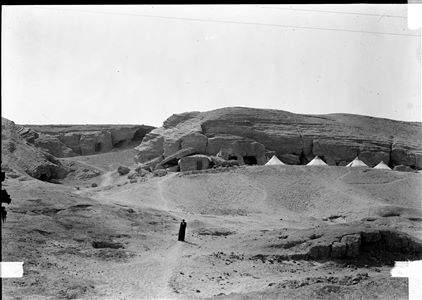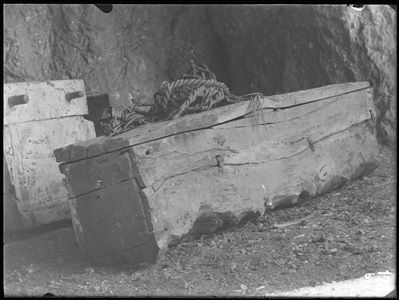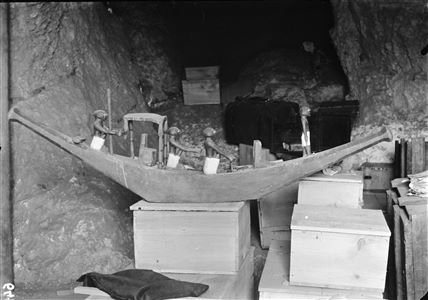Tomb of Iqer. For some very fragile materials it was necessary to pack the pieces using cotton and then place them in special crates. The image shows the wooden cabin of a military vessel, as suggested by the hanging shields. (S.15776?). Schiaparelli excavations.
Tomb of Iqer. For some very fragile materials it was necessary to pack the pieces using cotton and then place them in special crates. The image shows the wooden cabin of a military vessel, as suggested by the hanging shields. (S.15776?). Schiaparelli excavations.
Tomb of Iqer. Model of a granary with some silos that probably didn’t reach Turin. The picture, taken in situ, is the only evidence of this model of which there is no other trace today. Schiaparelli excavations.
Tomb of Iqer, burial chamber. The lid remains of the outer sarcophagus, with white stucco and inscriptions from the Coffin Texts (G2T). This artefact is documented only by these images. Already being in a fragile state, it was eaten by termites and disintegrated during the attempt to remove it from the tomb.
Tomb of Iqer, burial chamber. The lid remains of the outer sarcophagus, with white stucco and inscriptions from the Coffin Texts (G2T). This artefact is documented only by these images. Already being in a fragile state, it was eaten by termites and disintegrated during the attempt to remove it from the tomb.
Tomb of Iqer, burial chamber. The lid remains of the outer sarcophagus, with white stucco and inscriptions from the Coffin Texts (G2T). This artefact is documented only by these images. Already being in a fragile state, it was eaten by termites and disintegrated during the attempt to remove it from the tomb.
Tomb of Iqer, burial chamber. The lid remains of the outer sarcophagus, with white stucco and inscriptions from the Coffin Texts (G2T). This artefact is documented only by these images. Already being in a fragile state, it was eaten by termites and disintegrated during the attempt to remove it from the tomb.


